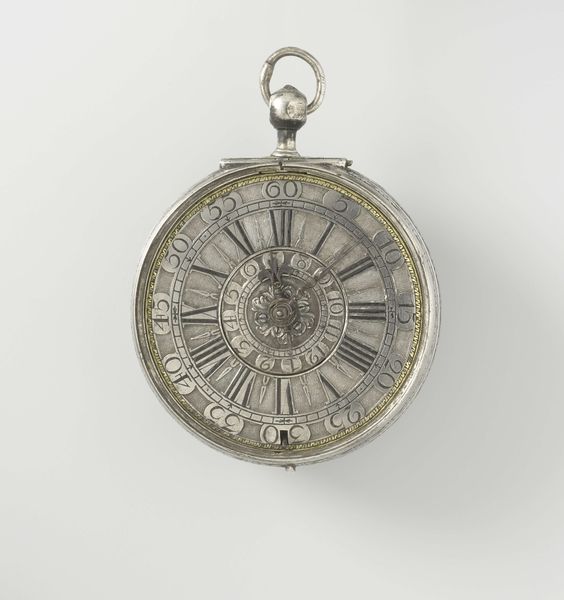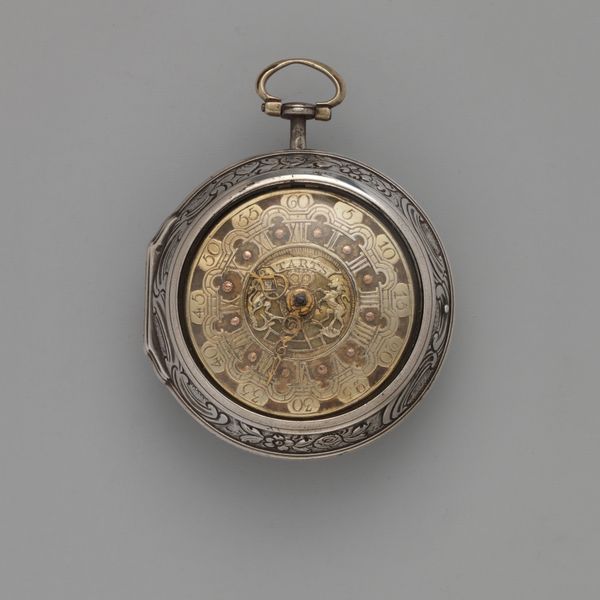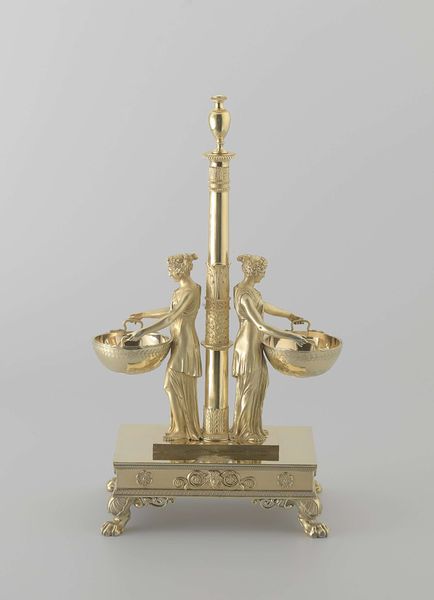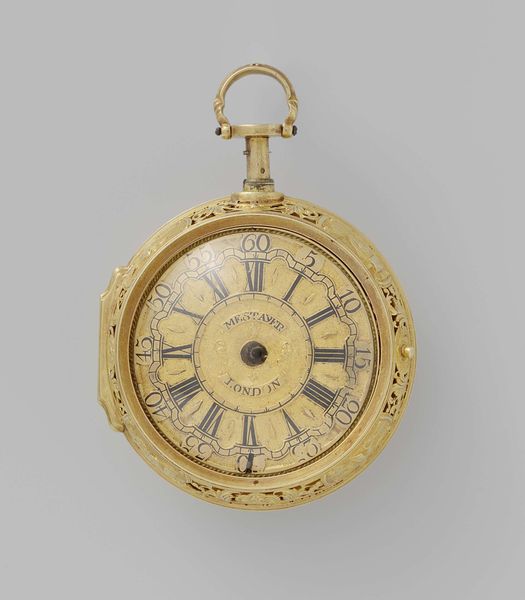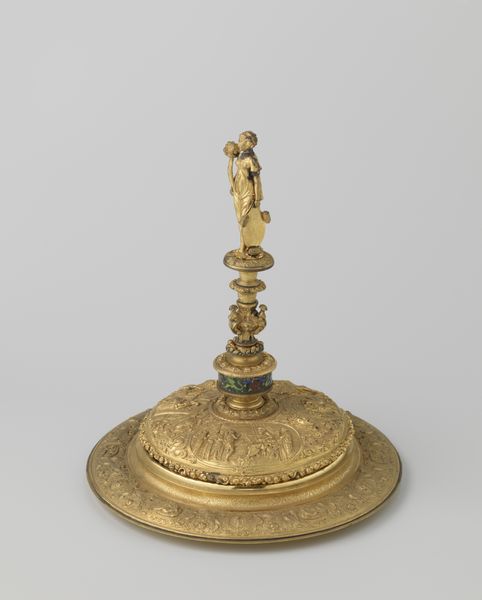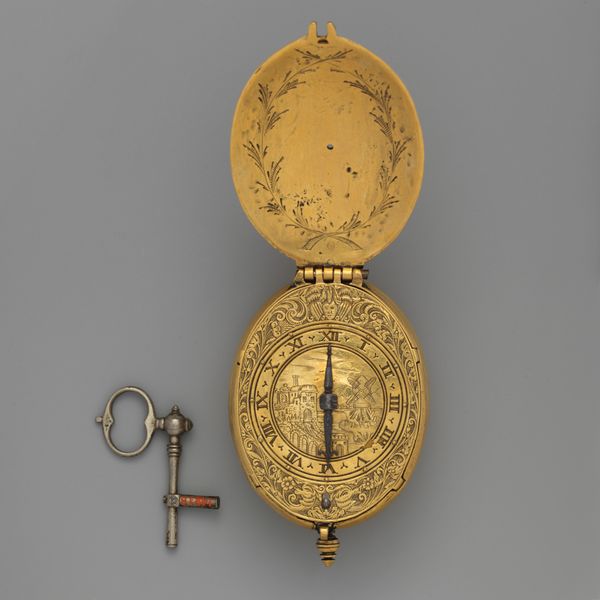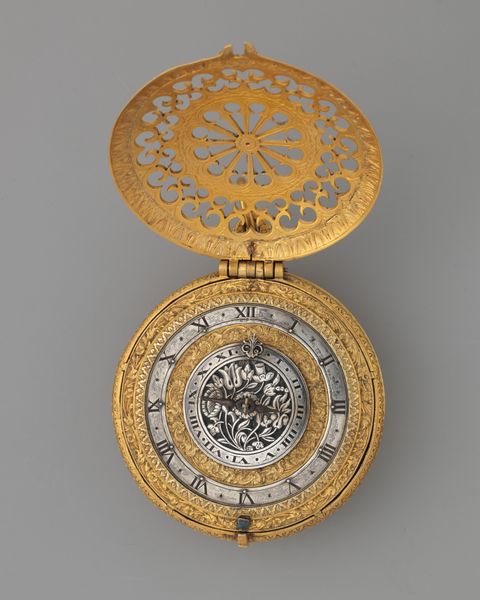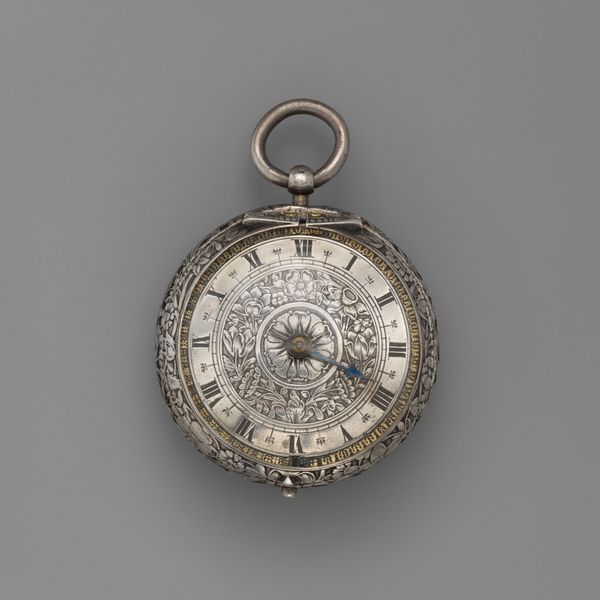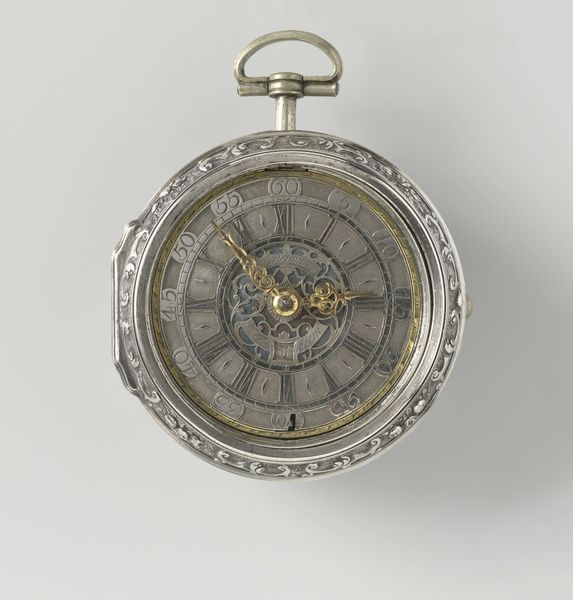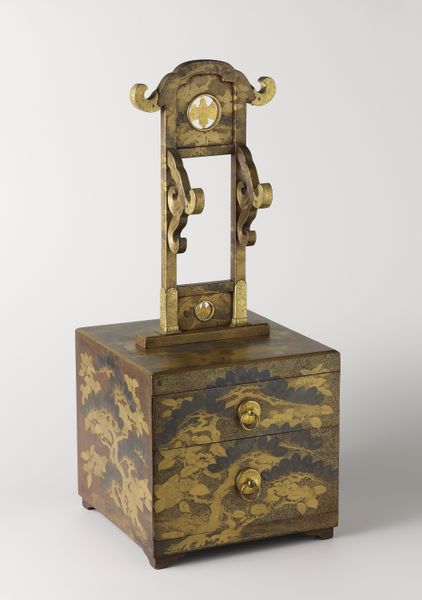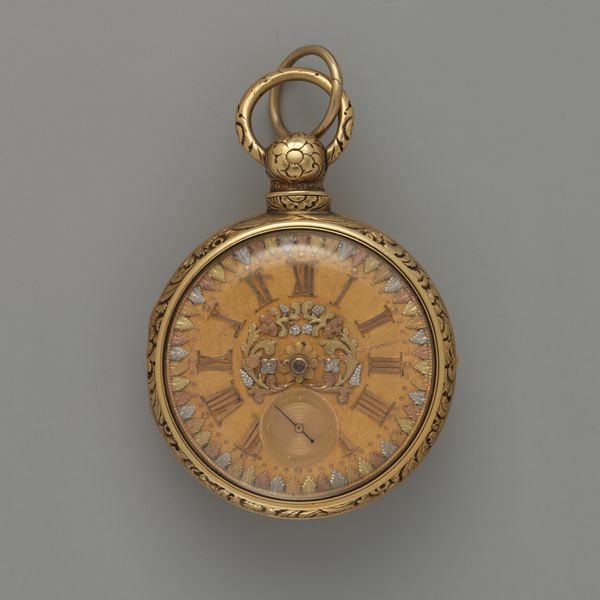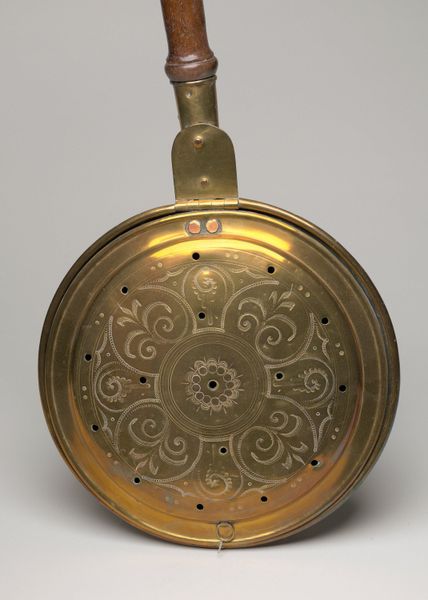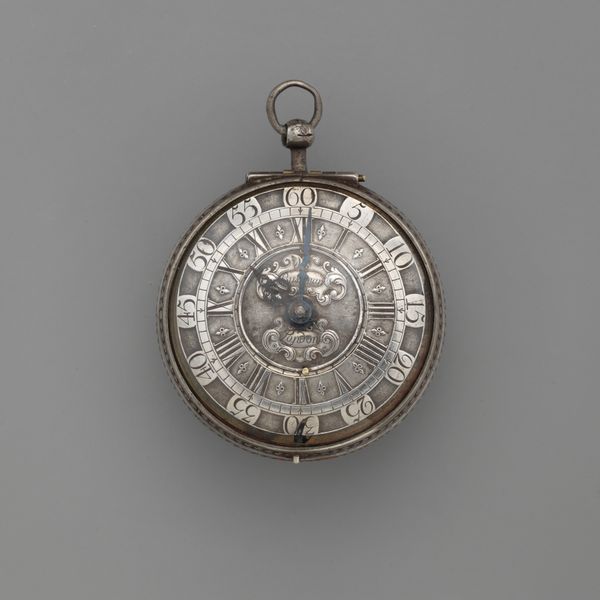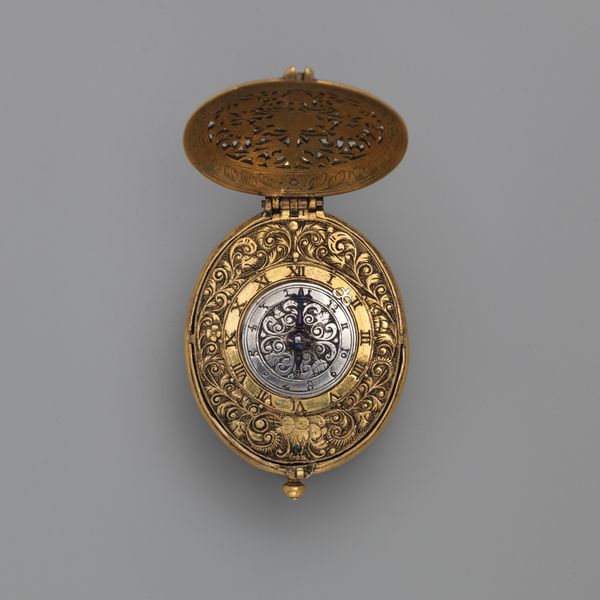
carving, metal, bronze, sculpture
#
portrait
#
carving
#
baroque
#
metal
#
bronze
#
figuration
#
sculpture
Dimensions: height 19.7 cm, width 6.3 cm, depth 6.0 cm
Copyright: Rijks Museum: Open Domain
Editor: Here we have a table clock in the shape of Atlas, crafted sometime between 1603 and 1628. It's a striking piece, made with bronze and other metals. I'm immediately drawn to the contrast between the polished, almost glowing figure of Atlas and the intricately detailed, darker clock face he supports. What do you see in this work? Curator: It is through meticulous attention to the object's formal properties that we can begin to grasp its aesthetic language. Notice how the artist has deliberately played with the interplay of vertical and horizontal lines, using the figure's stance to create a sense of dynamic tension, and how the weight and thrust is all distributed, all directed up. Can you see how the circular clock face serves as a visual counterpoint, softening the rigid geometry? Editor: Yes, I see that now. The clock face also has an immense amount of detailed carving. Curator: Indeed. The detailed carving on the clock’s face, and on the base itself, presents a rich tapestry of textures which create an internal visual dialogue. It is important to also note that the artist has mastered symmetry by implementing these designs throughout all the major surfaces. Do you see any geometric inconsistencies? Editor: The small, almost imperceptible, tilt of Atlas. Is it intended to throw us off? Curator: Precisely! The clock would almost disappear if you implemented basic gestaltism upon this piece, blending away into pure symmetry. It does, however, create a wonderful disruption to your experience of its materiality! Editor: This has given me an incredible new perspective, it feels as though without this deconstruction I would have not experienced half of what I see now! Curator: Agreed, by engaging with the artwork in such close fashion allows one to truly appreciate both the technical ingenuity, as well as the compositional decisions of its creation.
Comments
rijksmuseum about 2 years ago
⋮
As a rule, Atlas carries a celestial globe, a three-dimensional map of the stars. A timepiece can also represent the universe, showing the movement of the stars. To enhance the engraving on the dial and foot, the furrows of the lines were filled with niello, a rich black alloy of silver, copper and sulphur.
Join the conversation
Join millions of artists and users on Artera today and experience the ultimate creative platform.
